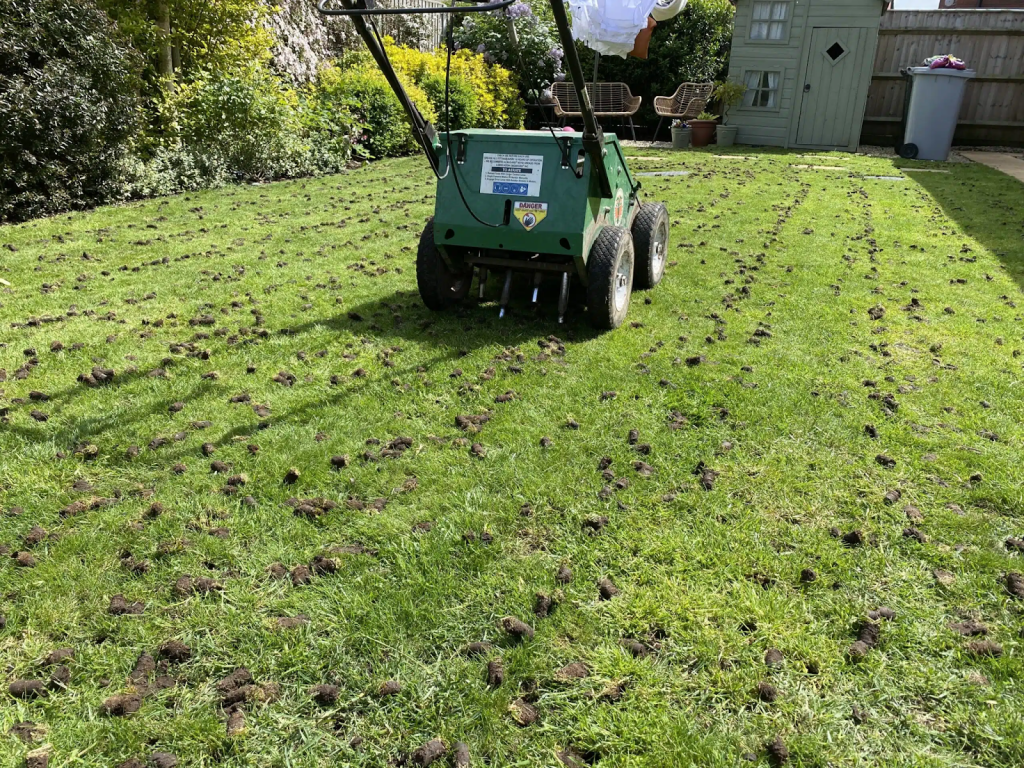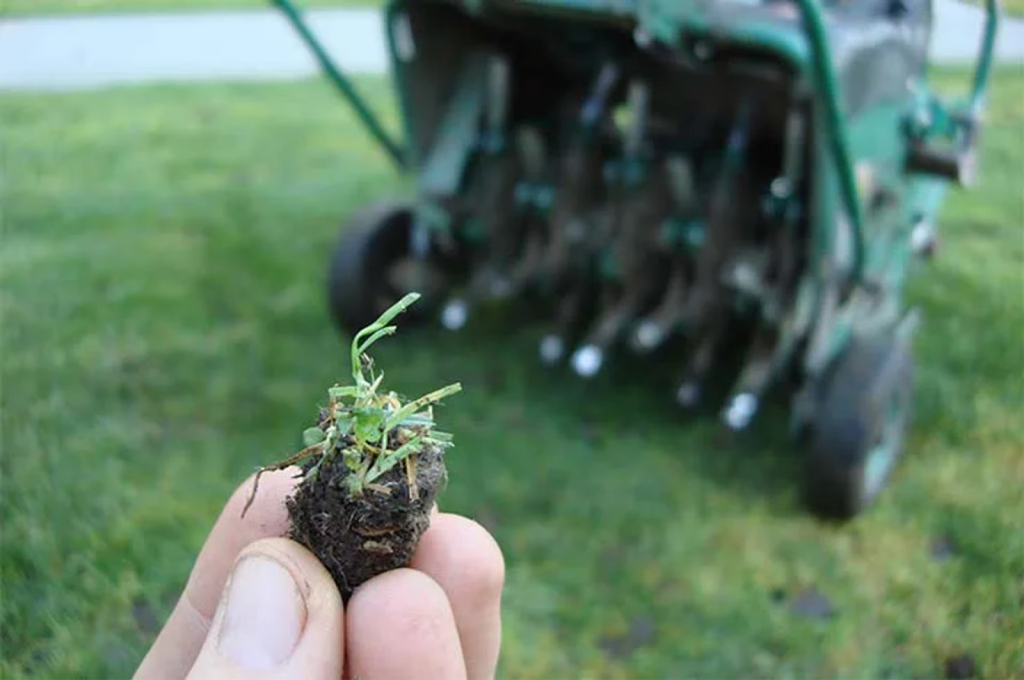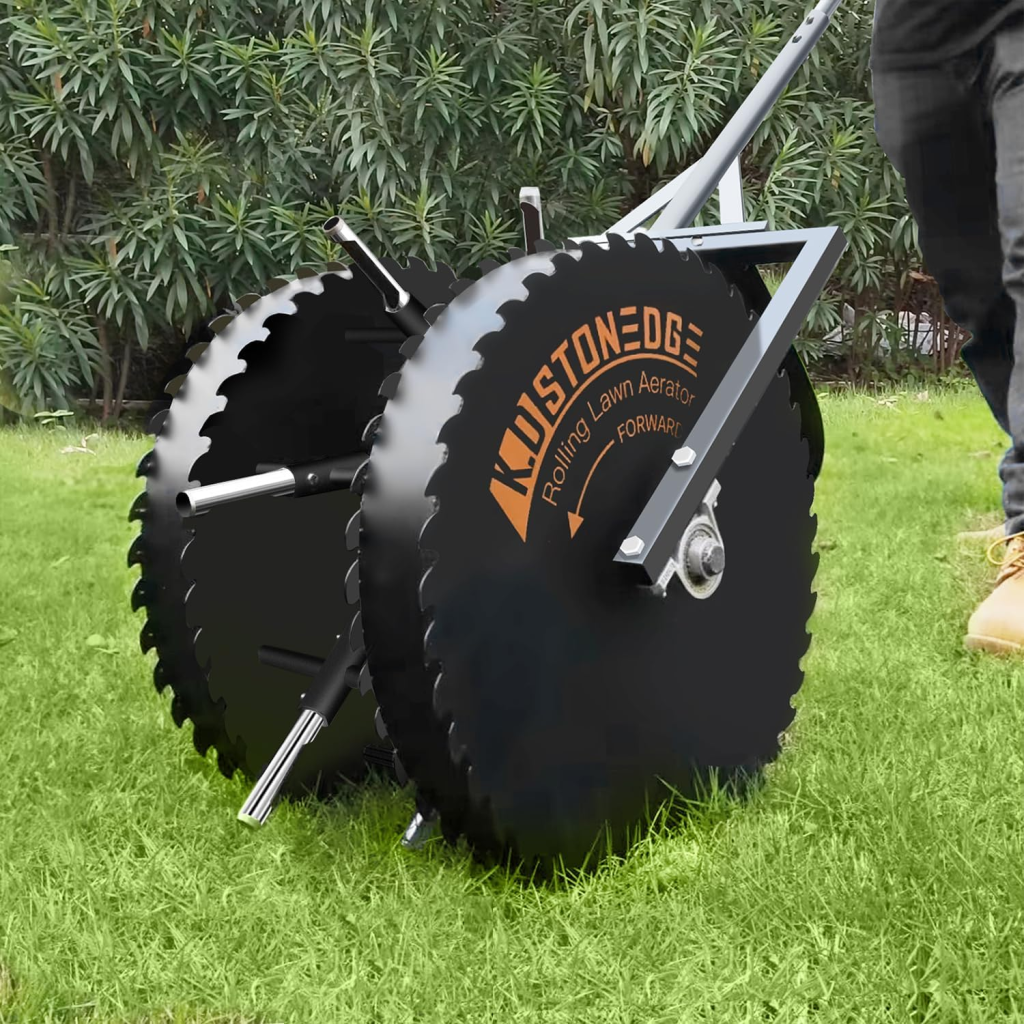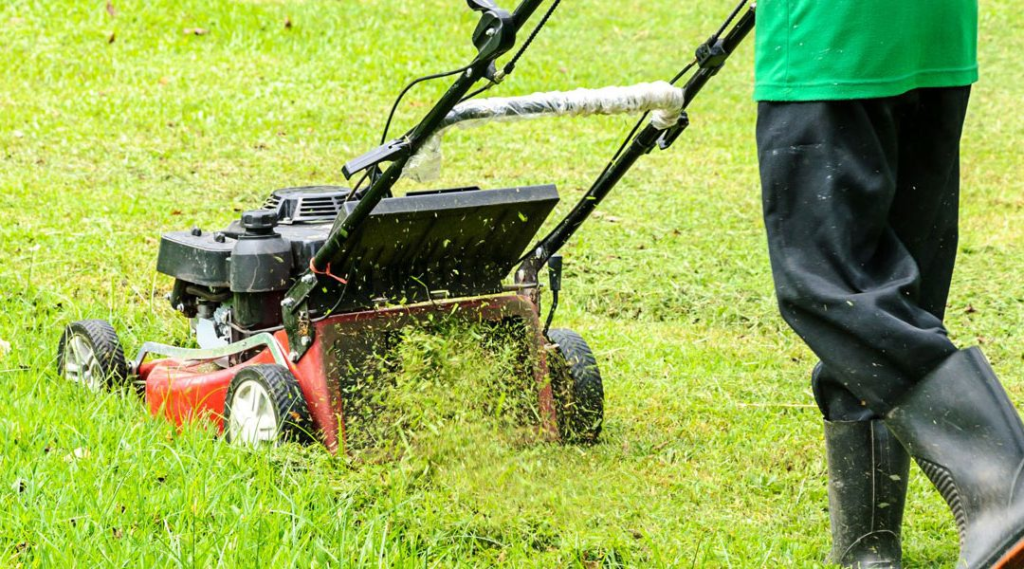Healthy grass starts below the surface. Aeration opens compacted soil so air, water, and nutrients reach roots, boosting growth and helping turf handle stress. This lawn aeration guide shows how you can aerate your lawn in stepwise fashion and explains why timing with your grass’s active season matters for recovery.
Key core aeration benefits include better oxygen flow, improved water movement, and easier nutrient uptake in tired lawns. For compacted or patchy areas, add it to your seasonal lawn care tips to keep color and density consistent.
What Is Lawn Aeration and Why It Matters

Lawn aeration means pulling small plugs or opening holes so air, water, and nutrients reach turf roots. The process acts as a soil compaction solution, creating pore space and improving gas exchange so roots aren’t fighting dense layers.
With better movement below the surface, grass root growth strengthens and the turf bounces back with thicker, sturdier blades. Over time, results show up as healthy lawn soil, improved infiltration, and less thatch interfering with vigor.
Key Benefits of Aerating Your Lawn

Core aeration opens channels so water, air, and nutrients reach roots, thickening turf and boosting color. The top benefits of aeration include better water infiltration, relief of compaction, and stronger root growth that fills bare spots.
It also helps reduce thatch naturally by increasing microbial activity and breaking up the layer that can block inputs. Together these actions improve lawn health and make feeding and watering work harder, delivering durable lawn maintenance benefits across the season.
Author’s Note: Check out our post Expert Lawn Aeration Techniques for a healthier, greener yard!
Signs That Indicate Your Lawn Needs Aeration
Pooling after rain, thinning patches, and a spongy feel underfoot are clear signs that your lawn needs aeration.

Hard soil blocks roots, so expect poor grass growth and slow rebound after mowing. Persistent puddles or runoff signal soil drainage issues from compaction or thatch. Aeration opens channels so water and air reach roots. If bare spots spread or heavy foot traffic compacts paths, treat these lawn problems as a cue to aerate during the active growing season for your grass type.
Best Time of Year to Aerate Your Lawn
Timing sets recovery up for success. For cool-season lawn care, core aeration lands best in early fall, with an alternate window in early spring when growth can repair the holes quickly. For warm-season grass, target late spring through early summer after green-up so plugs heal fast and roots spread.
Moist, not soggy, soil helps tines pull clean cores and protects turf during recovery. If you’re planning to aerate as part of spring lawn care, skip heat or drought spells to keep regrowth on track.
Choosing the Right Type of Lawn Aerator

Rolling Lawn Coring Aerator
Choosing between the different types of aerators comes down to soil and yard size. For clay-heavy or compact turf, a core unit that pulls plugs is the more effective pick because it relieves compaction and opens channels for roots.
Use this quick aeration equipment guide to pick what’s right for you.
- Manual Spike Aerators: Simple foot-powered tools with hollow tines, and great for small lawns.
- Spike Shoes: Fun, but only useful for light maintenance. Don’t expect deep penetration.
- Manual Core Aerators: These handheld tools remove small soil plugs and are ideal for targeted aeration in compacted or high-traffic areas.
- Rolling Lawn Coring Aerator: With a drum-style design and hollow tines, this tool covers more ground efficiently while still being manageable for DIY use.
- Tow Behind Core Aerator: Designed to attach to a lawn tractor, it’s perfect for covering large properties and delivering deep, even core removal with minimal effort.
- Gas-Powered Aerators: The go-to tool for serious jobs. Best for large lawns and compact soil.
In the core aerator vs spike aerator debate, spikes only punch holes and can press soil tighter, so they suit sandy soil or light touch-ups on small areas. The best lawn aerator for big yards is a tow-behind core model, while tight spaces pair well with manual lawn tools like the manual or rolling corer.
Author’s Note: Check out our post Aerating Your Lawn with A Core Aerator for a complete guide on how to use core aeration to create a vibrant and thriving yard!
DIY Lawn Aeration: Step-by-Step Instructions
Short grass makes aeration cleaner. Mow low, then water the day prior until soil is moist, and mark sprinkler heads.

For DIY lawn aeration, run a core machine in two crisscross passes to pull plugs, giving extra attention to compact paths. That covers how you can aerate your lawn yourself without guesswork.
Leave plugs to break down, then overseed and top-dress. Water consistently afterward, keep foot traffic light, and mow once the plugs crumble. This aeration process keeps lawn care at home simple and effective.
Tips to Maximize Your Aeration Results
Soft soil makes plugs easy. Water the lawn a day before to moisten, not soak, which sets up effective lawn aeration. Make overlapping passes, then crosshatch a second pass to pull more plugs and aerate for better results. Leave the cores to crumble and rake lightly after drying.
Skip heavy foot traffic and mowing for a short window, one of the most overlooked post aeration tips. For quick wins, overseed right after and brush in compost, two simple lawn aeration tips that boost seed-to-soil contact.
Common Aeration Mistakes to Avoid
Timing matters. Aerating during dormancy stresses turf. Schedule in the grass’s active season and work on moist, not soggy, soil. Copying a neighbor’s midsummer routine often backfires. Big lawn aeration mistakes include skipping prep like watering a day prior, mowing before the job, and flagging sprinkler heads.

To avoid lawn damage, skip spike tools on compact clay and choose a core unit. Watch for aeration errors in drought or saturated ground. For beginner lawn care, leave plugs to break down and topdress after.
Post-Aeration Lawn Care Essentials
Smart lawn care after aeration locks in the gains. Begin post aeration watering with light, frequent sessions to keep the surface moist so new roots settle and cores break down gently.
If planning overseeding, spread seed right after aeration so it drops into the holes, then keep moisture consistent. Hold mowing until the new grass reaches mowing height, then cut high with a sharp blade. Finally, fertilize after aeration with a product suited to grass type and local rules to support recovery.
Conclusion: Give Your Lawn the Breath of Life
Healthy roots need air and room to move, and core aeration delivers. The key aerated lawn benefits are less compaction, better water and nutrient flow, and thicker turf that lifts curb appeal.
Pair aeration with overseeding or compost topdressing for proven lawn improvement. Schedule it with seasonal lawn care during active growth for faster recovery and longer-lasting results. Make the first plugs now and kick off a home lawn transformation neighbors notice.
Aerate, water, and share your curb-appeal wins in the comments below!


